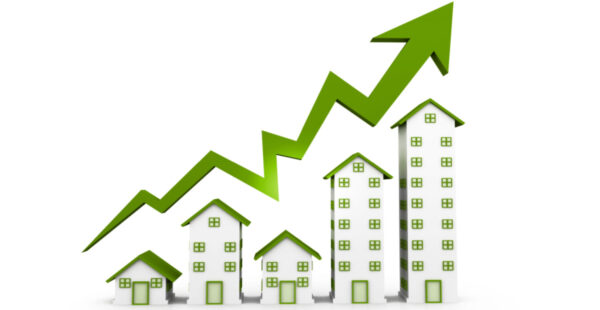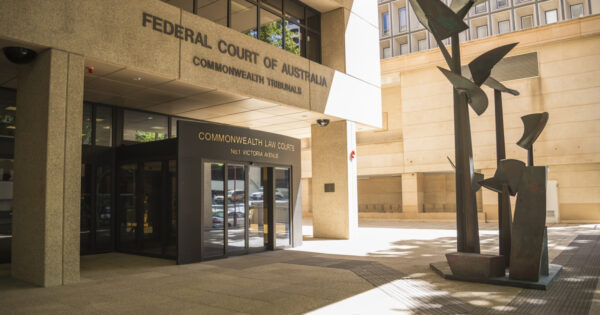Consensus split over next RBA decision despite uplifting CPI result

The latest Consumer Price Index (CPI) figures for the September quarter have caused a divide in the consensus over the Reserve Bank of Australia’s (RBA’s) next monetary policy moves before the end of the year.
The Australian Bureau of Statistics (ABS) released the CPI data for the quarter on Wednesday, with the headline inflation figure hitting 2.8 per cent after a 0.2 per cent rise quarter-on-quarter – the first time it’s come in under three per cent since March 2021. Largely attributed to the electricity rebates temporarily introduced by state governments on top of an expanded Commonwealth rebate program, this figure is back within the RBA’s two-to-three per cent target range.
The data also indicated underlying inflation was on a downward trajectory, with trimmed mean annual inflation coming in at 3.5 per cent, down from four per cent in the June quarter. According to HSBC, the RBA has suggested it will focus on this measure when considering its policy decisions, which is currently above the central bank’s target range.
Australian Council of Trade Unions Secretary, Sally McManus, called for the RBA to start reducing interest rates prior to the end of the year.
“Australia’s families have spent three-and-a-half years shouldering the financial hardship that has come with the need to put the brakes on inflation,” she said.
“Even an initial quarter of a percentage cut in interest rates, on the average mortgage, puts an extra $100 a month back into the household budgets of families who need that money. Australia’s inflation is clearly following the global trend, as global supply chain challenges get resolved. Major central banks around the world are well advanced in cutting rates. The Reserve Bank needs to now follow their lead or else risk the health of the economy and people’s jobs.
“Working people have done all of the heavy lifting to fight inflation, while in many cases big business has made things tougher for consumers by price gouging. They have withstood tough times meeting mortgage costs while supermarkets engaged in phony price discounting. The latest national accounts show working families are spending less and cutting back spending during trips to the supermarket, as they look for ways to reduce food bills.
“Now that underlying inflation is quickly returning to target, the Reserve Bank should start lowering the official cash rate this year. The Reserve Bank’s indications that it will hold back on rate cuts until next year is not
reasonable, given that today’s data shows Australia’s inflation is less ‘sticky’ or stubborn than it was.
“Major economies around the world have already been cutting rates and Australians have a right to expect that our rates can and should start to be lowered before the year is out.”
Paul Bloxham, Chief Economist, Australia, NZ & Global Commodities at HSBC, said services inflation was still high as the fall in headline inflation was mainly driven by decreasing goods inflation. He also confirmed HSBC’s expectation of the first rate cuts to occur “well into 2025”.
“For the RBA, the focus will be on the quarterly underlying measures and particularly the trimmed mean, and today’s print offered no real surprises there,” Bloxham said.
“Combined with stronger-than-expected momentum in the recent jobs figures, we expect the RBA to be firmly on hold in November and see it as unlikely that rate cuts will be discussed. That said, the continued gradual progress on disinflation and the (very) slowly loosening jobs market are also likely to keep the RBA from lifting rates in the near term.
“Since late 2023 our central case has been the RBA would be on hold through 2024, and this remains our view. We see rate cuts as not likely until well into 2025 (our central case is Q2 2025), and some risk that it could take longer or that the RBA may miss the cutting phase altogether.”
Dwyfor Evans, Head of APAC Macro Strategy at State Street Global Markets, indicated the firm’s prediction of rate cuts commencing in early 2025.
“A lower oil price and government electricity subsidies continue to bias Australian inflation to the downside, but core prices remain elevated relative to target. The State Street PriceStats Australia series notes continued price pressures in Healthcare, Recreation, Food and elevated Insurance costs,” Evans said.
“The upshot is that the online price index for this year continues to look more like the experience of 2022 than 2023 and markedly above the 10-year average price index. Consensus expectations on Q3 disinflation cannot mask concerns that online price pressures in Australia remain persistently high relative to the RBA’s 2-3% target. A cautious RBA may again indicate early 2025 for rate easing when it meets and releases its monetary policy statement on 5 November.”











So someone in India who isn't licensed provided personalised financial advice and ASIC's response is to tell them to be…
Seeking Regulatory relief from Regulation. Industry Super Funds want to control $1.6 Trillion $$$ and ever growing with almost zero…
If Kalkine has officially been released and operates under a legitimate license to provide general advice, it raises an important…
Not sure what they're seeking regulatory relief from. In my view is they get tickled with a warm lettuce leaf…
Will they ever be named & shamed, fined and banned for life ??? Unlikely hey ASIC & APRA, especially for…